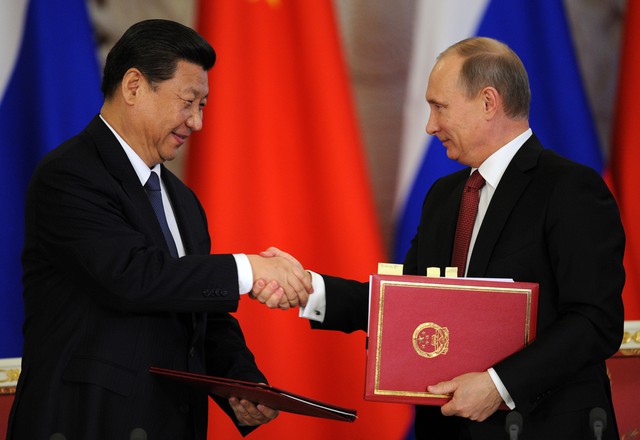 Parler
Parler Gab
Gab
IEA: Russia set to surpass Saudi Arabia as top crude producer
Meanwhile, the International Energy Agency (IEA) stated in its latest monthly oil market report that Russia is on the brink of overtaking Saudi Arabia as the leading crude producer within the Organization of the Petroleum Exporting Countries (OPEC). Riyadh is a founding member of OPEC, while Moscow is a member of the OPEC+ collective that includes the core founding nations and other oil-producing countries. Based on the IEA's data, Saudi Arabia produced approximately 9.98 million bpd, while Russia stood at 9.45 million bpd last month. The agency's estimation indicated that the Saudi Arabia's total crude output will only dip to nine million bpd this July and August – the lowest production rate of the kingdom in two years. This decrease is a result of Saudi Arabia's decision to extend its production cut to stabilize oil prices. Additionally, Riyadh announced an extension of its voluntary crude output cut of one million bpd until August. However, it creates an opportunity for Russia to emerge as the top oil producer within the OPEC+ group of crude exporters. Concurrently, Russia declared a 500,000 bpd cut in its oil exports for the same period. Together, these production cuts will account for a 1.5 percent decrease in the global oil supply. Saudi Energy Minister Prince Abdulaziz bin Salman emphasized the deep cooperation between Riyadh and Moscow as part of the OPEC+ group, and reaffirmed their commitment to supporting the stability of the oil market. This collaboration has led to voluntary reductions of 1.66 million bpd by some OPEC+ members from April until the end of 2024. Follow FuelSupply.news for more stories about oil supply across the globe. Watch Brannon Howse of "Worldview Report" talking about Russia's record-high oil export since April 2020. This video is from the Worldview Report channel on Brighteon.com.More related stories:
Russian oil still powers European vehicles, thanks to India’s refining capability.
Gas and diesel prices expected to increase as crack spread soars.
IEA report: Nearly 80% of Russian crude oil has been rerouted from EU to China and India.
Sources include: RT.com 1 Marinelink.com RT.com 2Nearly two dozen countries, including many US allies, are dumping their US Treasury bond holdings
By Arsenio Toledo // Share
By Arsenio Toledo // Share
Intelligence report: China likely providing military aid to Russia
By Laura Harris // Share
Governments continue to obscure COVID-19 vaccine data amid rising concerns over excess deaths
By patricklewis // Share
Tech giant Microsoft backs EXTINCTION with its support of carbon capture programs
By ramontomeydw // Share
Germany to resume arms exports to Israel despite repeated ceasefire violations
By isabelle // Share










